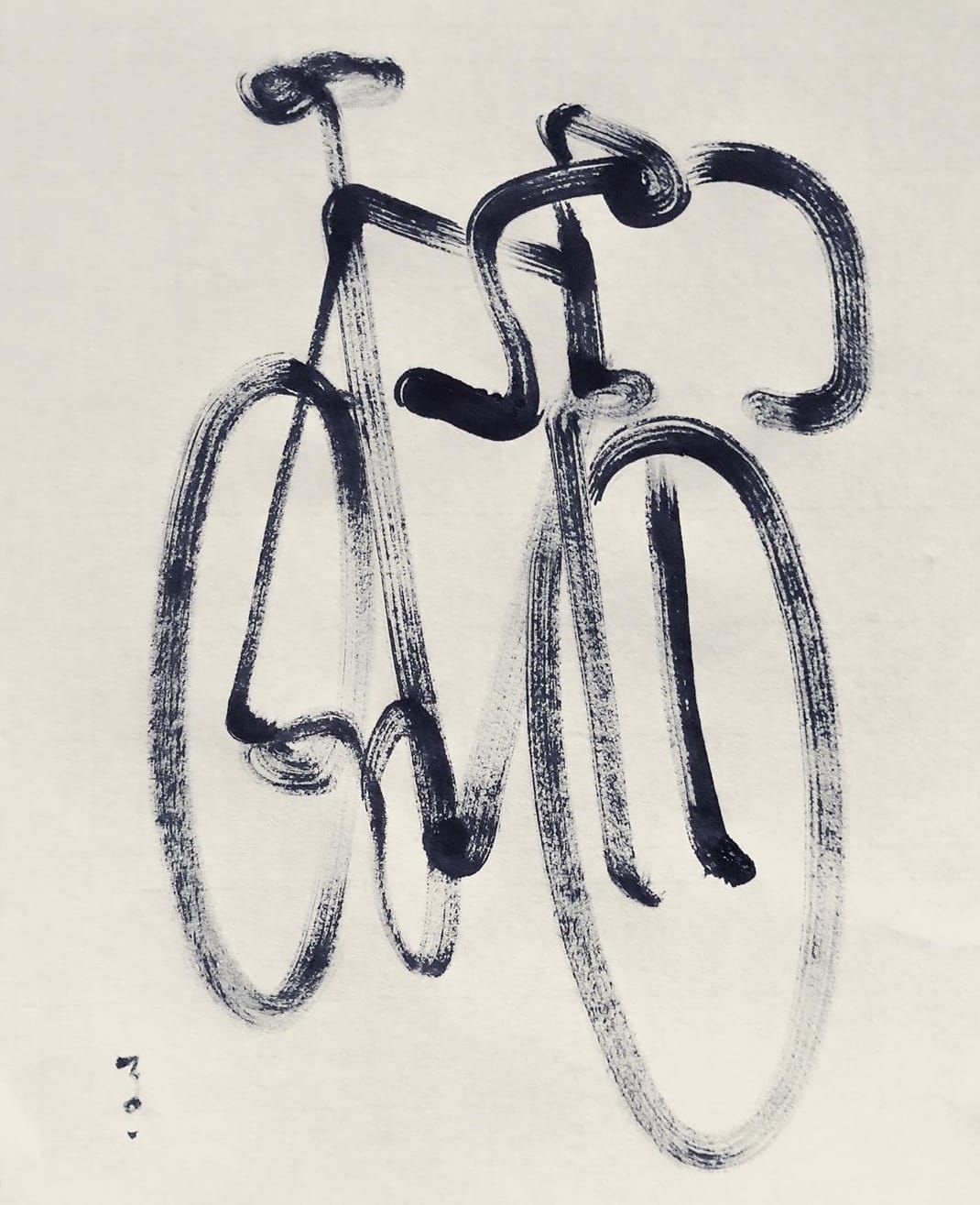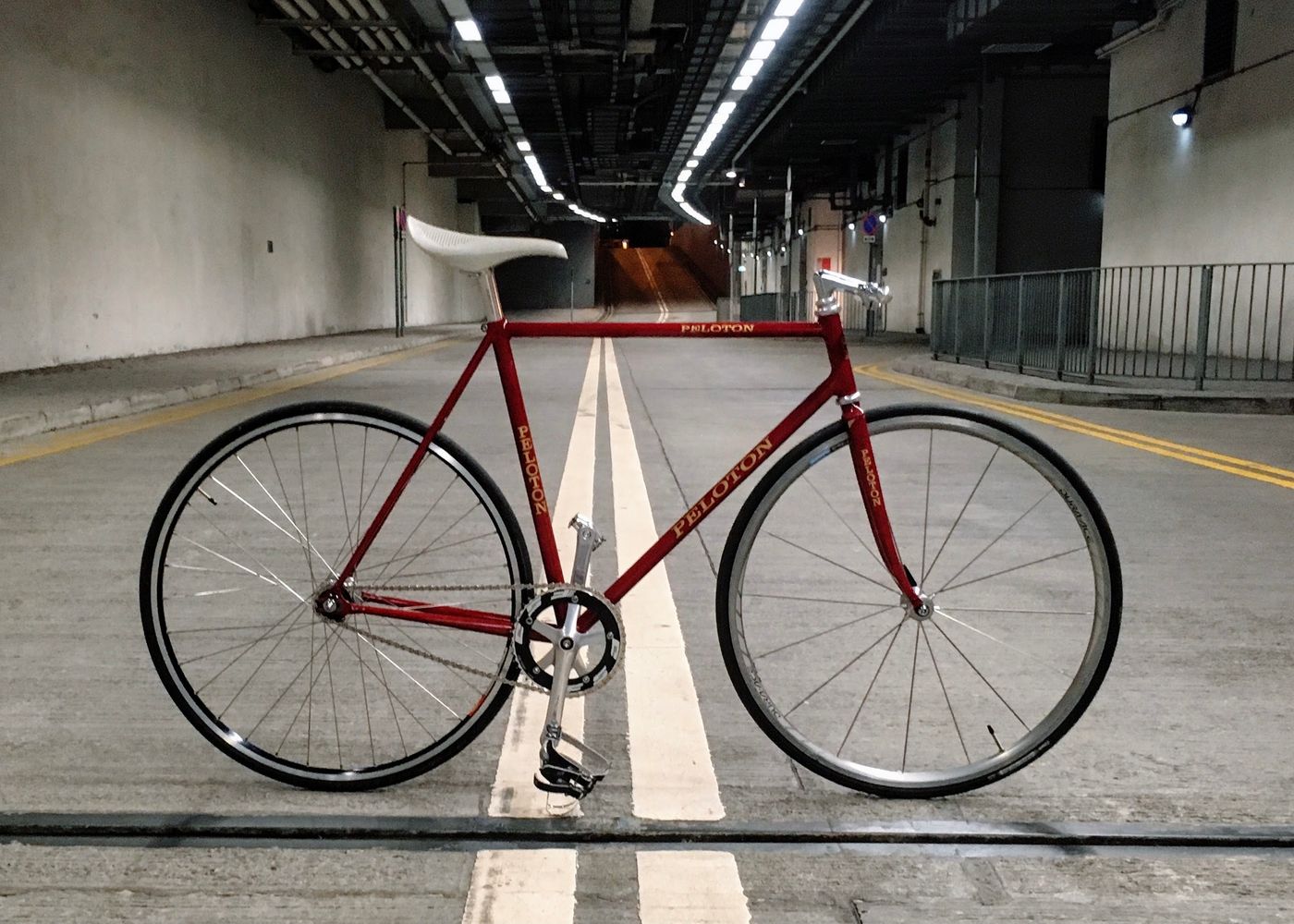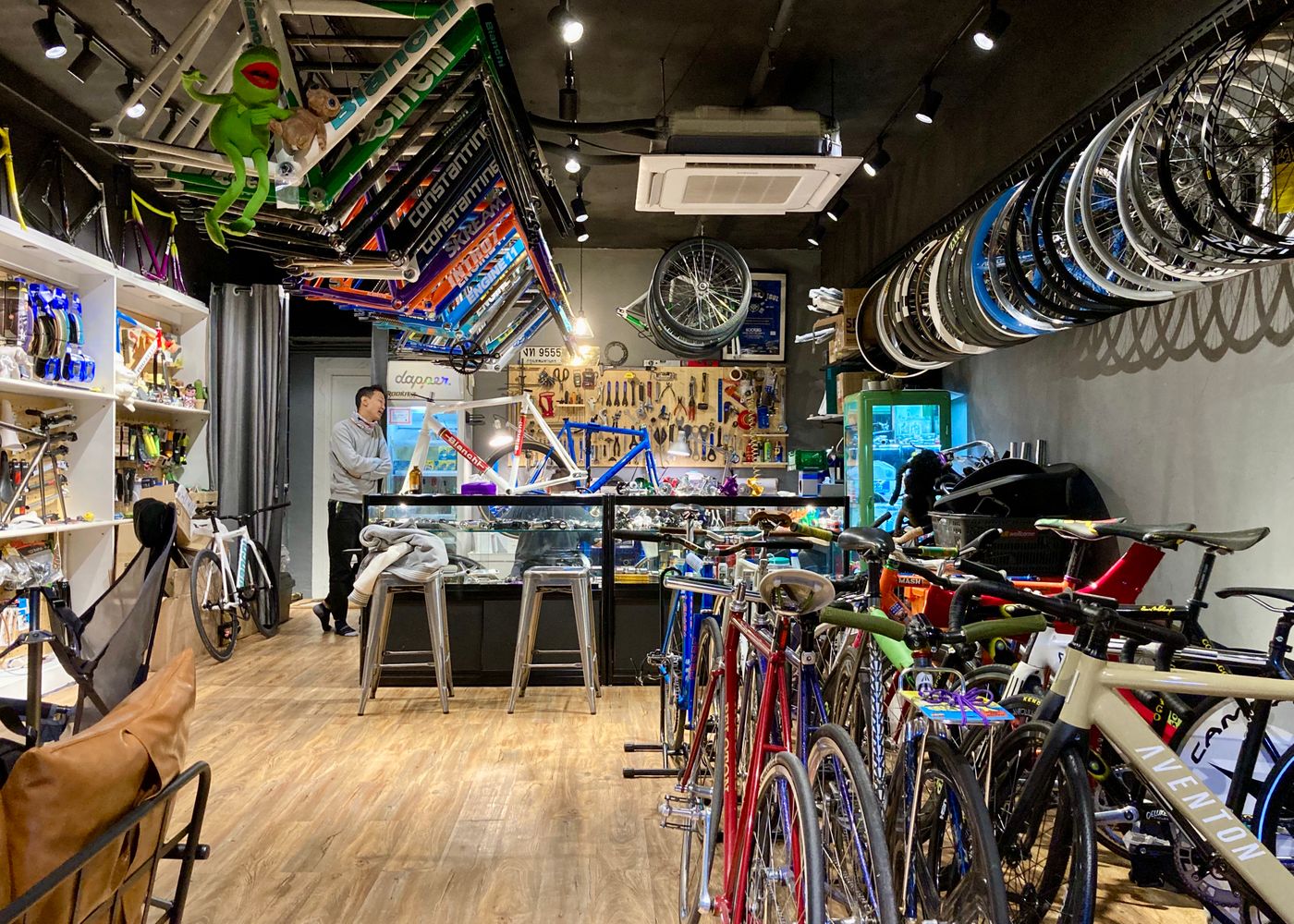When they see the bicycle as an obstacle, we step on the teeth without brakes (1)

At eight o'clock in the morning, W pushed his bicycle out the door. The embarrassing thing is that the elevator in the house is small, and after W pushes the bicycle 𨋢, the square area on the ground is cut in half. Pedestrians are difficult to enter, and riders are embarrassed by the inconvenience.
What makes this city unfriendly to bicycles is more than just the elevator design. New Territories West is already a place where many people ride bicycles. But if you want to commute by bicycle, from Tuen Mun to Yuen Long, riders need to pass at least 15 traffic lights. In some places, even cycle tracks are lacking -- if a rider doesn't want to try his hand at the law, and he doesn't want to fight for the right of way with cars on the road, they can only push their bikes. Moreover, the cycle tracks in Hong Kong are originally the product of being divided between the road and the pedestrian path, and almost all of them have only a narrow width.
not only that. If your workplace does not welcome bicycle parking, the dream of many riders to go back to work will not come true at all. In addition to the problem of bicycle theft on the street, many residential and commercial buildings regard bicycles as sundries and hope to prevent bicycles from being in the property. The situation of cutting locks and clearing vehicles has also occurred frequently in public housing estates in recent years.
In this series of articles, W wants to share with you the difficulties of commuting by bicycle in Hong Kong, and also hopes to explore the face of people who are stepping on their teeth in a city where road planning has failed so much.


"Young man, are you riding a bicycle?"
"Yes, go back to work"
"Oh~"
"Why don't you brake your bike?"
"Yes!"
This is a conversation that every "Gangtooth" rider will encounter in Hong Kong. Kengya bicycle is a bicycle that relies on foot brakes. There are different names in foreign countries: fixed gear, fixie, racing wheel/keirin, fixed teeth and so on.
"Come on, no brakes, hit someone and count?"
In the nineteenth century America, the Teeth was the first bicycle to be popularized , and it was even used by postmen to deliver letters. There is a saying that the novice is not easy to control the teeth, so the postman is not afraid of the car being stolen. However, it is by no means impossible to brake, but the skills of foot braking need more practice to master. The principle is a bit like a car tail-flick: stop the pedals from rotating forward, offset the power of the rear wheels, and let the tires slide on the road. , riders are commonly known as "skid".
The structure of the Teeth and Olympic track bikes is the same. The first Olympic cycling race was held in 1896. In addition to road cars, track racing was also a competition event of the year. The track cyclist that Hong Kong people are more familiar with is Li Huishi.
After World War II, Japan's economy was in need of revitalization, and bicycle manufacturers organized a revitalization association , and also began to cooperate with the government to hold races. Similar to horse racing in Hong Kong, wheel racing is not only a sport, but also has a lot of gambling elements .

The Japan Racing Association introduced the stubborn teeth as follows: "A racing bike is a bicycle born only for fast running. In order to completely eliminate "things that are not necessary for speeding up", no braking device is installed." However, on Hong Kong's roads, which are extremely unfriendly to bicycles, is it feasible to just speed up and run? Why are there still many people who insist on stepping on such a "no brake" car?
W came into contact with Teeth Bikes online about six years ago, and has been relying on online stores and auction sites to buy parts, assemble them on his own, and only visit a Teeth bike shop when he encounters tough problems. Although W likes the simple structure of the dagger, and the parts are versatile and easy to build, he has never said that the dagger is as safe as other bicycles.
le vélo Cycling Workshop was the first car shop W visited. It is located in the Tuen Mun Industrial Zone and has been in business for seven years. It is a relatively well-developed studio in the city, and it has also created a community of riders. The owner, Kenneth, has a slogan: "Bikes with teeth are best without brakes." W asked about the safety of the teeth, but Kenneth said, "It's dangerous to do as much as you can." He said that there are still many dangerous things in Hong Kong today;

to be continued.
Like my work? Don't forget to support and clap, let me know that you are with me on the road of creation. Keep this enthusiasm together!
